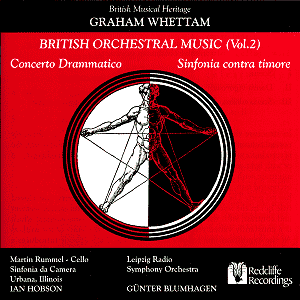 Composer: Carl Reinecke
Composer: Carl Reinecke
Works: Serenade in G minor for string orchestra, Twelve Tone Poems for string orchestra, Children’s Symphony, Op. 239
Performers: Chamber Orchestra Kremlin/Misha Rachlevsky
Recording: Recorded in the Great Hall of the Moscow Conservatory, September 2000
Label: CLAVES CD 50-2107
Carl Reinecke, a quintessential figure of the late Romantic era, occupies a somewhat ambivalent position within the pantheon of 19th-century composers. While he was a respected pedagogue, virtuoso pianist, and conductor, his music has largely faded into obscurity, overshadowed by more prominent contemporaries such as Mendelssohn, Schumann, and Brahms. This recording presents a sampling of Reinecke’s oeuvre for strings, showcasing the Serenade in G minor, the Twelve Tone Poems, and the Children’s Symphony, Op. 239, all of which reflect his melodic craftsmanship and adherence to classical forms, yet reveal the limitations that have led to his diminished legacy.
The Serenade in G minor, with its six movements, can indeed be categorized as “light music,” evoking a playful charm that is both delightful and, at times, insipid. The opening movement displays a lilting grace, marked by a buoyant theme that dances lightly across the strings. Misha Rachlevsky and the Kremlin ensemble embrace this character, with a polished sound that captures the work’s inherent charm. However, their interpretation often tiptoes into overly indulgent territory, particularly in the slower movements, where the frequent use of portamento dilutes the clarity of articulation. The second movement, for instance, while initially engaging, loses some emotional depth as the expressive lines are smoothed over with excessive vibrato, leading to a somewhat homogenous soundscape.
In the Twelve Tone Poems, Reinecke’s attempt at a character-driven suite showcases his penchant for picturesque titles that hint at narrative intentions. Yet, their brevity—most pieces hover around two to three minutes—renders them somewhat insubstantial, functioning more as musical sketches than fully realized compositions. The performers navigate these pieces with a commendable sense of cohesion, but the lack of thematic development results in a series of episodic vignettes that, while technically proficient, fail to leave a lasting impression. The title pieces, such as “The Nightingale” and “The Dance of the Gnomes,” are charmingly orchestrated but are ultimately overshadowed by the more profound innovations of their contemporaries.
The Children’s Symphony, Op. 239, stands out as a highlight of this collection. With its playful instrumentation and whimsical themes, it evokes the spirit of Haydn’s “Toy” Symphony. The clever incorporation of sounds like cuckoo calls and toy drums injects a sense of joy and vitality. Here, the Kremlin players fully embrace the jovial atmosphere, delivering lively interpretations that bring the work to life. This performance is marked by a commendable clarity of sound, allowing the various instrumental colors to shine through, and it is refreshing to hear an ensemble that indulges in the playful nature of the work without succumbing to overly serious interpretations that can stifle such music.
Sound quality throughout the recording is commendable, with a clear and vibrant acoustic that captures the ensemble’s nuances. The engineering effectively balances the ensemble, allowing for the distinct timbres of each string instrument to be heard without overpowering one another. However, while the recording is technically proficient, it lacks the depth and warmth that one might find in more renowned orchestral recordings.
Reinecke’s music, as demonstrated by this collection, offers a window into a bygone era, full of melodic charm and classical structure. Yet, the overall impression is one of charming curiosity rather than profound musical engagement. While the performances are competent and occasionally delightful, they do not transcend the limitations of the compositions themselves. This disc serves well as an introduction to Reinecke’s work, but it ultimately reaffirms the composer’s position as a minor figure in the rich tapestry of late Romantic music, deserving of exploration but perhaps not of revival.



